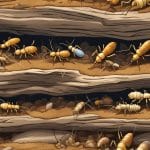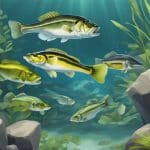Types Of Amphibians
What are the different types of amphibians? Amphibians are a class of animals which exhibit a very unique kind of lifestyle. Other than being vertebrates, they can live in both water and land thus the name amphibians. Usually, they spend the early stages of their life in water and the remaining part on land. These animals are unique in that they cannot control their body temperature; they are cold blooded animals (poikilotherms). Their body temperature will always vary with the temperature of the surrounding. There are different types of amphibians which are distinguished in accordance to their way of life, their appearance etc. Even though scientists have tried to classify different types of amphibians, the list is still not exhaustive as some are still being discovered.
The different types of amphibians can be classified into three major categories: the anura (salientia), the caudate (urodela) and the gymnophiona (apoda).
Types of amphibians
Anura has the largest species of amphibians. In fact the most common type of amphibians we encounter such as toads and frogs are found in this particular category. It has almost 4500 species -the species is the smallest unit of classification in binomial nomenclature. These types of amphibians have various distinct features such as longer limbs, a tailless body, produce sounds by squeaking and fertilization occurs externally; i.e., the fertilization of female eggs takes place outside the female body. Anura is a just a broad category. These types of amphibians can further be classified according to their appearance and adaptive characteristics. For instance, toads have short hind limbs and are also tailless while frogs have longer hind limbs and have a tail during earlier stages of their lives. This tail is however lost as the frog matures.
Another category of amphibians is the caudate. This is the second largest type of amphibians after the anura. In popular parlance, they are referred to as the salamanders. Presently more than 450 species belonging to this group have been studied and classified. They include the sirens, mud puppies, water dogs, newts, salamanders etc. Unlike the anura, these types of amphibians have well-developed tails which help the aquatic ones to swim. They have four limbs except the sirens which have no hind limbs. The largest amphibian i.e. Andvias davidanius, is found in this category. Even though the anura can vocalize, this group of amphibians do not usually vocalize except for the dicamptodon which can squeak.
Gymnophiona: These types of amphibians are the smallest in number (about 50 have so far been discovered studied and classified). Caecilians belongs to this group and they are one of the most easily misidentified creatures. These types of amphibians resemble earthworms, with a reduced tail and segmented bodies. They make their habitat underground, often burrowing themselves in, and also in water, which is why they are not so often encountered. These types of amphibians are also characterized with almost functionless eyes. They are mostly found in South Asia, some parts of Africa and South America. Their diet is not yet fully understood.






